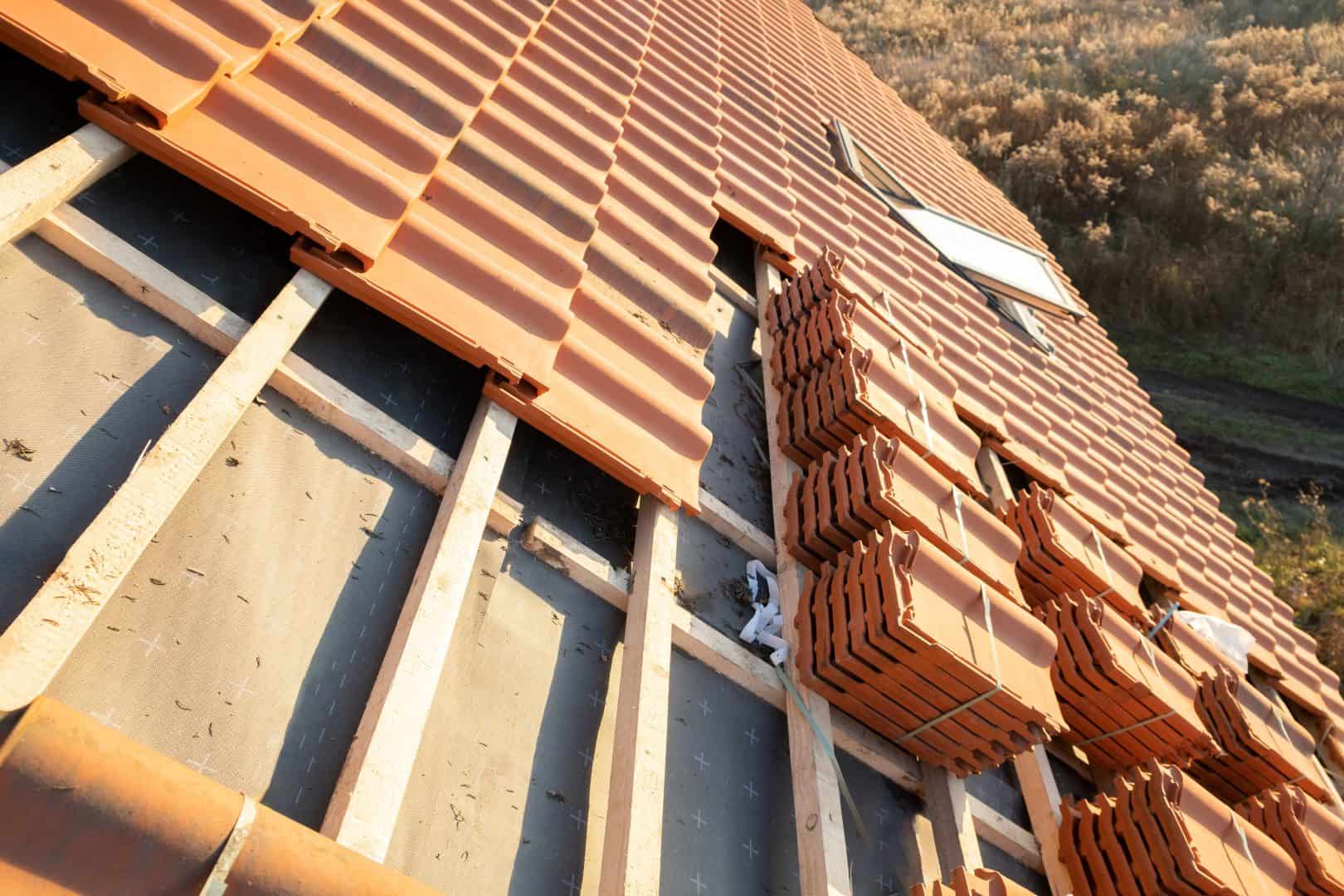How long will my new roof last?
Fill Out The Form And We'll Get Back To You

There’s a lot to consider when it comes to the lifespan of your new roof, and understanding these factors can help you make informed decisions. From the type of materials used to the local climate conditions, various elements play a significant role in determining how long you can expect your roof to endure. By knowing the common lifespans for different roofing materials and what maintenance practices you should adopt, you can better protect your investment and ensure your home remains safe and secure for years to come.
Key Takeaways:
- Material Type: The longevity of your roof largely depends on the materials used; for example, asphalt shingles may last 15-30 years, while metal roofs can last 50 years or more.
- Climate Impact: Local weather conditions play a significant role in roof durability; extreme temperatures, heavy rainfall, and snow can shorten the lifespan of your roof.
- Maintenance Practices: Regular inspections and maintenance can significantly extend the life of your roof, helping to identify and address issues before they escalate.
Factors Affecting Roof Longevity
The lifespan of your roof can be significantly influenced by various factors, including:
- Quality of materials used
- Installation techniques
- Maintenance frequency
- Environmental conditions
- Local regulations and standards
Recognising these elements can help you make informed decisions regarding your roofing project.
Material Types
An array of roofing materials is available, each with distinct lifespans and maintenance needs:
- Asphalt shingles
- Metal roofing
- Clay or concrete tiles
- Wood shakes
- Built-up roofing
Assume that investing in higher-quality materials typically equates to a longer-lasting roof.
| Material | Typical Lifespan |
|---|---|
| Asphalt shingles | 15-30 years |
| Metal roofing | 40-70 years |
| Clay tiles | 50-100 years |
| Wood shakes | 30-50 years |
| Built-up roofing | 15-30 years |
Climate and Weather Conditions
With changing climates and varied weather patterns, your roof may face different challenges that impact its durability.
Further, regions experiencing extreme temperatures, heavy rainfall, or strong winds can significantly shorten the life of your roof. For example, roofs in coastal areas may deteriorate quicker due to moisture and salt exposure, while those in colder climates may suffer from ice dam formation. Understanding the local climate and weather patterns is vital for selecting the right roofing materials and maintenance practices to ensure longevity.
Average Lifespans of Common Roofing Materials
It is important to understand the typical lifespans of various roofing materials when considering your new roof. Common options include asphalt shingles, metal roofing, and tile or slate. For further insight about your specific situation, you can check out How much life is left in my roof? : r/Roofing.
Asphalt Shingles
Average asphalt shingles last between 15 to 30 years, dependent on the quality and installation. Regular maintenance can extend their lifespan, making them a popular choice for homeowners.
Metal Roofing
Average metal roofs can last 40 to 70 years, offering longevity and durability. They are an excellent investment for those seeking a long-lasting roofing solution with minimal maintenance.
Consequently, metal roofing is highly resistant to harsh weather conditions, including wind, rain, and snow. This durability means that you are less likely to face significant repair costs, making it a cost-effective option over time.
Tile and Slate
To many homeowners, tile and slate roofs are known for their impressive lifespans, often exceeding 50 years or more. These materials provide both aesthetic appeal and exceptional durability.
Due to their robust nature, tile and slate roofs require little maintenance, and their resistance to extreme weather increases their attractiveness. You can enjoy peace of mind knowing your investment is built to last.
Maintenance Tips for Extending Roof Life
Now, maintaining your roof is necessary for prolonging its lifespan. To help you in this endeavour, consider the following tips:
- Schedule regular inspections.
- Clean gutters and downspouts.
- Remove debris promptly.
- Check for damaged shingles or tiles.
Knowing these practices can significantly contribute to the longevity of your roof.
Regular Inspections
Before making any decisions regarding your roof, it is important to conduct regular inspections. Aim to check your roof at least twice a year, ideally in the spring and autumn. Look for signs of wear, such as cracked shingles or indications of leaks, and address these issues immediately to prevent further damage.
Cleaning and Repairs
Roof maintenance cannot be overlooked when aiming for a long-lasting structure. It’s necessary to clean your roof and carry out necessary repairs without delay. Neglecting small issues can lead to significant problems down the line.
With regular cleanings, you prevent the buildup of moss and debris that could lead to rot or water pooling. It’s advisable to remove any overhanging branches that might drop leaves or debris on your roof. Additionally, repair any loose shingles promptly and seal minor leaks before they develop into larger issues. This proactive approach will help keep your roof in top condition and maximise its lifespan.
Signs Your Roof Needs Replacement
All roofs age and deteriorate over time, but knowing when yours needs replacing can save you from costly repairs. Signs such as missing shingles, sagging areas, or water stains inside your home can indicate it’s time for a new roof. For more information on how to identify these issues, check out How Long Does a Roof Last? Warning Signs You Need a ….
Visible Damage
One of the most apparent signs that your roof may need replacement is visible damage. Look for cracked, curled, or missing shingles, as well as any deterioration around flashing and vents. These issues can lead to significant leaks and further structural problems if not addressed promptly.
Leakage Issues
About leakage issues, if you notice any water stains on your ceilings or walls, it is time to investigate further. Small leaks can expand quickly, causing extensive damage to your home over time. Checking your attic for signs of water intrusion can help you identify and address the problem early.
And don’t ignore the potential for mould and mildew growth that can arise from persistent leakage. If water is seeping into your home, it can lead not only to further damage of roofing materials but also to adverse health effects for you and your family. Regular checks and prompt action can make all the difference in protecting your home.
Roofing Installation Impact on Longevity
Your roof’s longevity is significantly influenced by the quality of its installation. A well-installed roof will not only perform better but will also resist wear and tear for a longer time. To understand more about the lifespan associated with different roofing materials, take a look at What Is The Lifespan Of An Asphalt Shingle Roof.
Quality of Installation
For optimal longevity, quality installation is vital. Poor workmanship can lead to various issues like leaks and structural weaknesses, which can shorten your roof’s lifespan and necessitate costly repairs sooner than expected.
Choosing the Right Contractor
Any choice of roofing contractor will profoundly affect the end result of your installation. A reputable contractor with robust experience and positive reviews is paramount for ensuring your roof is installed correctly and efficiently.
A thorough vetting process can prevent potential issues down the line. Check for credentials, insurance, and references to ensure you are hiring a qualified professional. Engaging a seasoned contractor will not only assure quality workmanship but also provide peace of mind, knowing your roof is in capable hands.
Warranty Considerations
Many homeowners overlook the importance of warranties when evaluating the longevity of their new roof. It is important to understand that warranties can vary significantly in terms of coverage and duration. Manufacturer and workmanship warranties typically play a vital role in protecting your investment, ensuring that you are safeguarded against potential defects and installation issues for a specified period. Knowing the warranty details will help you make informed decisions about your roofing solution and provide peace of mind for years to come.
Manufacturer Warranties
Among the most critical aspects of your new roof are the manufacturer warranties. These warranties usually cover defects in materials and can last anywhere from 20 years to a lifetime, depending on the product you choose. Always check the specific terms and conditions, as some warranties may require regular maintenance or specific installation procedures to remain valid.
Workmanship Warranties
Warranties related to workmanship are equally important, as they cover the quality of installation by your chosen roofing contractor. A robust workmanship warranty will protect you from any issues arising due to improper installation, ensuring that the roof performs as expected for years ahead.
Indeed, a high-quality workmanship warranty typically ranges from five to ten years, depending on the contractor’s reputation and reliability. When dicking out a contractor, it is advisable to ensure they offer a workmanship warranty that aligns with your expectations. This demonstrates their commitment to quality and provides you with an assurance that any installation-related problems will be addressed promptly, further contributing to the longevity of your roof.
Final Words
From above, the longevity of your new roof depends on various factors, including the materials used, the quality of installation, and local weather conditions. Generally, you can expect asphalt shingles to last around 20-30 years, while materials like metal or slate can provide durability for 50 years or more. Regular maintenance and inspections will also play a significant role in extending its lifespan. By considering these aspects and staying proactive, you can help ensure that your new roof serves you well for many years to come.
FAQ
Q: How long can I expect my new roof to last?
A: The lifespan of a new roof largely depends on the materials used. For instance, asphalt shingles typically last 20 to 30 years, while metal roofs can last 40 to 70 years. Tile and slate roofs have a further extended lifespan, often exceeding 50 years with proper maintenance. It’s vital to consider the quality of the materials and the installation process to ensure the longest duration for your roof.
Q: What factors can affect the lifespan of my new roof?
A: Several factors can influence how long your new roof will last. These include the quality of the roofing materials, the installation process, local climate conditions, and maintenance practices. Harsh weather, such as heavy rain, snow, or extreme temperatures, can also have an impact. Regular inspections and maintenance can help prolong the life of your roof by identifying problems before they escalate.
Q: How can I maintain my new roof to maximise its lifespan?
A: To maximally extend the lifespan of your new roof, regular maintenance is key. This can involve clearing debris, checking for damaged shingles, ensuring proper drainage, and periodically inspecting the roof for signs of wear or damage. It is also advisable to have a professional inspection every few years to address any underlying issues that might not be immediately visible. Taking these steps will help maintain your roof in optimal condition.
Re-Roof of Bungalow
The guys made a fantastic job of replacing the roof on our bunglaow. They were fasy, relaible and excellent value for money.
Chimney Removal
We employed Wrights Roofs to take down our very old chimney – tht had seen better days. They carefully removed and made good the area where the chimney was. Really impressed.
New Roof
We had an extension built and Wrights came and put a new roof on. They were brilliant, no fuss, great value for money. Thank you.
Roofs, Flat Roofs Chimneys and Solar Panels
If you need roof work on your home, please complete the form or call us today.

